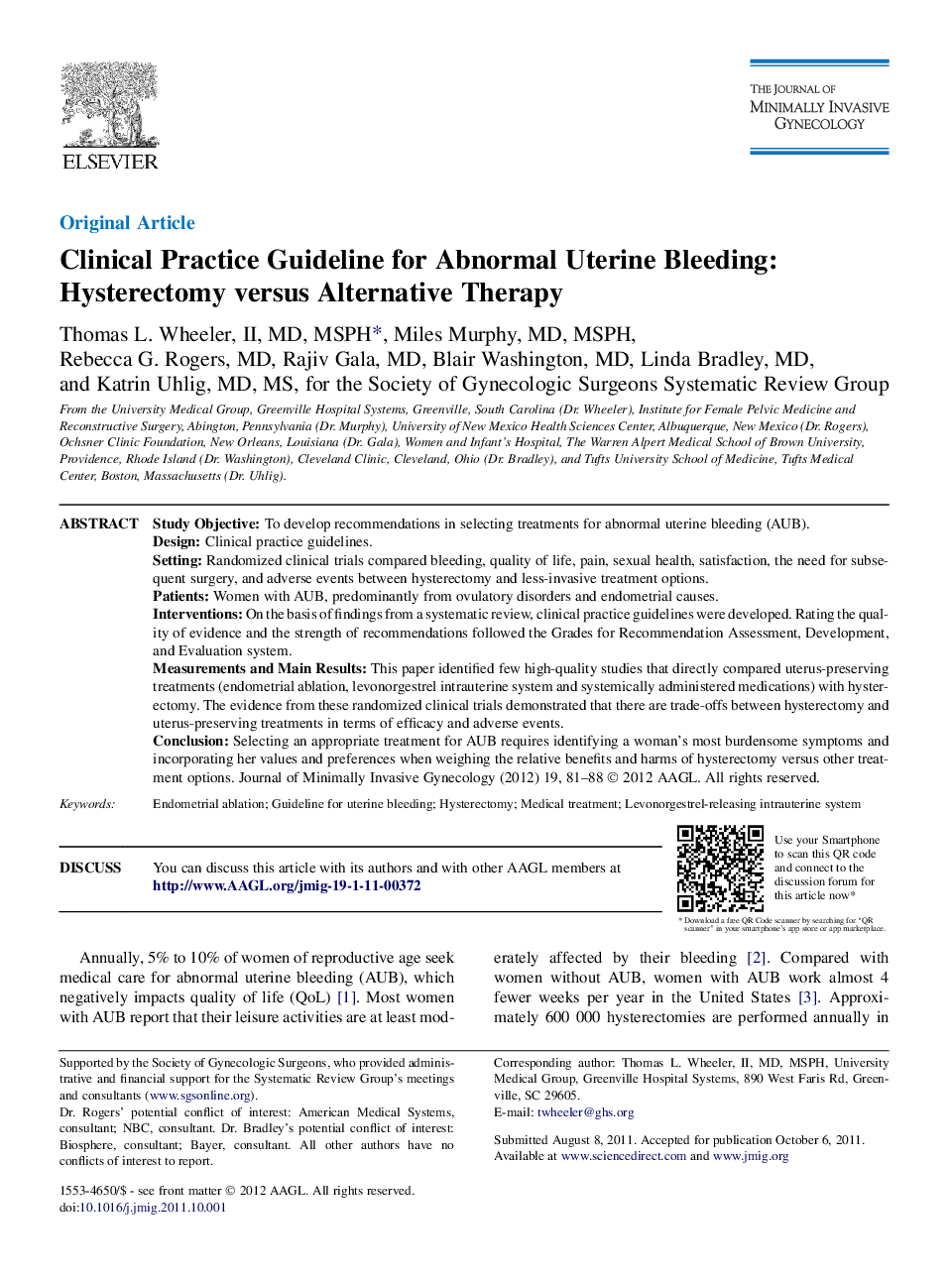| Article ID | Journal | Published Year | Pages | File Type |
|---|---|---|---|---|
| 3962098 | Journal of Minimally Invasive Gynecology | 2012 | 8 Pages |
Study ObjectiveTo develop recommendations in selecting treatments for abnormal uterine bleeding (AUB).DesignClinical practice guidelines.SettingRandomized clinical trials compared bleeding, quality of life, pain, sexual health, satisfaction, the need for subsequent surgery, and adverse events between hysterectomy and less-invasive treatment options.PatientsWomen with AUB, predominantly from ovulatory disorders and endometrial causes.InterventionsOn the basis of findings from a systematic review, clinical practice guidelines were developed. Rating the quality of evidence and the strength of recommendations followed the Grades for Recommendation Assessment, Development, and Evaluation system.Measurements and Main ResultsThis paper identified few high-quality studies that directly compared uterus-preserving treatments (endometrial ablation, levonorgestrel intrauterine system and systemically administered medications) with hysterectomy. The evidence from these randomized clinical trials demonstrated that there are trade-offs between hysterectomy and uterus-preserving treatments in terms of efficacy and adverse events.ConclusionSelecting an appropriate treatment for AUB requires identifying a woman’s most burdensome symptoms and incorporating her values and preferences when weighing the relative benefits and harms of hysterectomy versus other treatment options.
